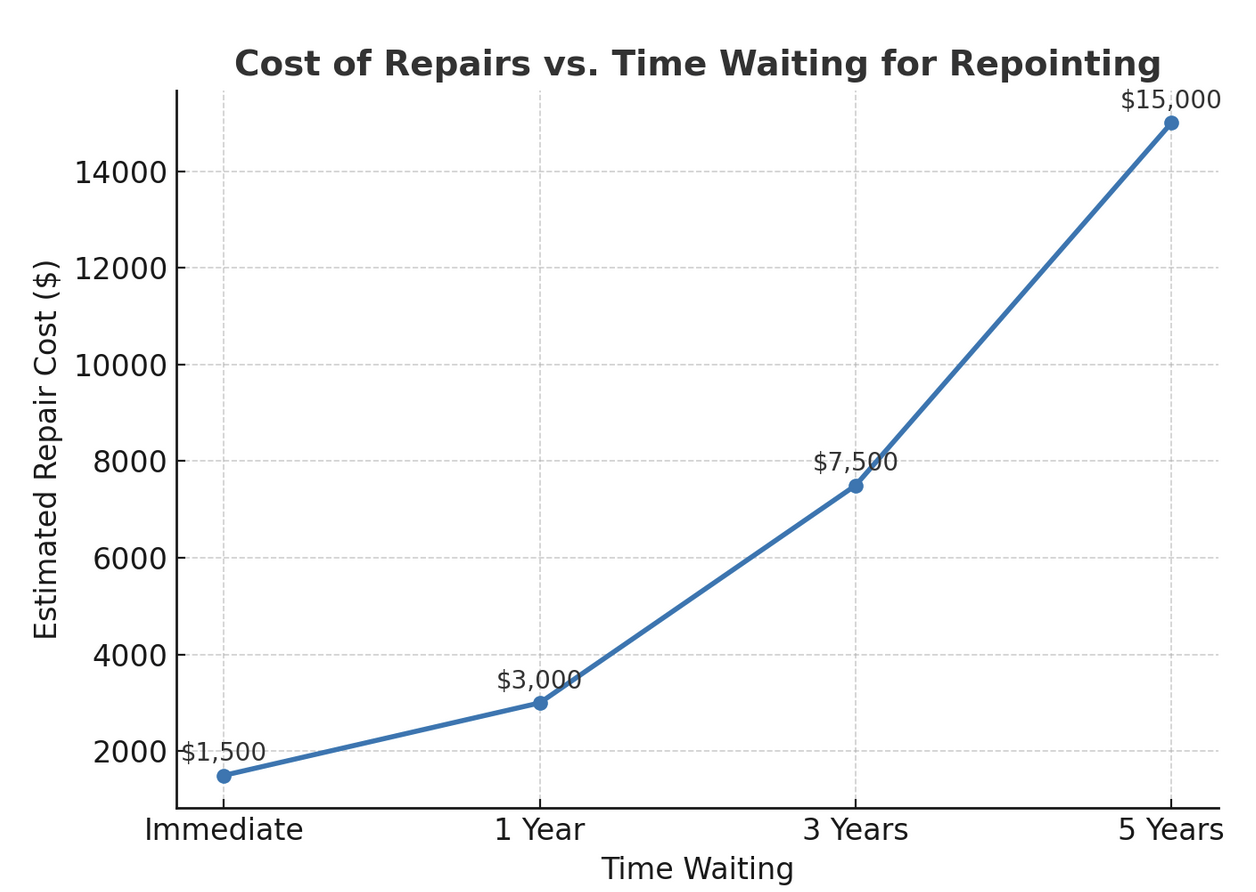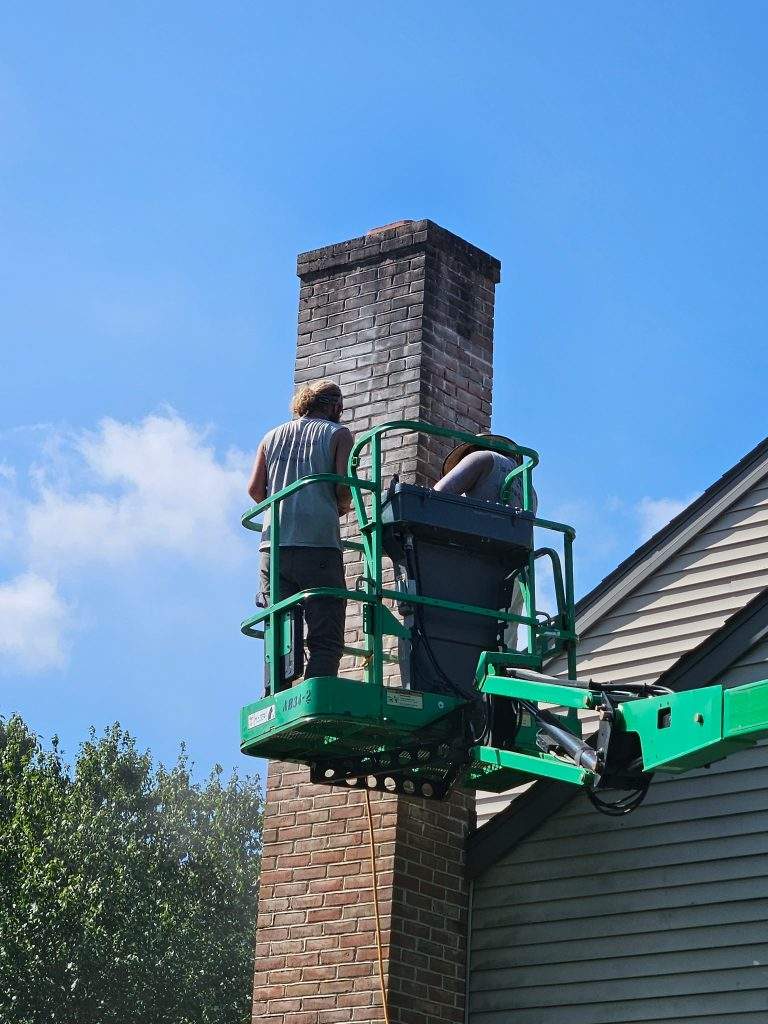Brick Repointing Can Save the Day
You’re curled up on the couch, coffee in hand, when—drip—something lands on your forehead. You look up. The roof looks fine. The skylight’s shut. Then it hits you: water is coming through your brick wall. Yes, sometimes Mother Nature finds her way inside, and she’s not bringing snacks.
Q: Why is water leaking through my brick wall?
A: Water leaks through brick walls when mortar joints deteriorate and no longer block moisture. Repointing — removing damaged mortar and replacing it with fresh mortar — restores the wall’s integrity, prevents leaks, and protects your home from costly structural damage.
“Buckets in the Living Room”
“Repointing is like dental work for your house,” our owner says with a grin. “Ignore it long enough, and you’re not just fixing a chip — you’re looking at a full root canal. One client waited so long they had buckets in the living room. Water features are great… in the backyard.”
What Repointing Actually Is (and Why It Matters)
Brick repointing is the process of removing damaged mortar from between bricks and replacing it with a fresh, weather-resistant mix. Mortar is the glue that keeps bricks stable and keeps water out. Once it starts failing, water seeps through gaps, setting off a chain reaction damaging walls, insulation, and sometimes the home’s structure.
According to the Brick Industry Association, well-maintained mortar joints can last 25–30 years, but neglect can cut that lifespan in half — and triple your eventual repair costs.
Healthy Mortar Joints vs. Deteriorating Mortar Joints
| Healthy Mortar Joints | Deteriorating Mortar Joints |
| Smooth, solid surface | Crumbling or powdery texture |
| Even color | Dark stains or water streaks |
| Flush with brick edges | Recessed or missing sections |
| No visible cracks | Hairline or wide cracks |
| Keeps water out | Allows moisture intrusion |
5 Signs Your Brickwork is Begging for Repointing
- Crumbling Mortar – If you can scrape it out with your finger, it’s overdue.
- Water Stains Inside – Those mysterious dark patches aren’t from bad paint.
- Efflorescence – White, powdery residue means water is moving through the brick.
- Loose Bricks – A wobbly brick is a big red flag.
- Unexplained Drafts – A “solid” wall shouldn’t whistle at you.
Why Waiting Costs More
Every month you wait gives water more time to rot wood frames, ruin insulation, and invite mold. That quick $1,500 repointing job? Wait a few years, and it could turn into a $15,000 wall rebuild.
The cost difference between acting now and waiting a few years can be shocking. Here’s a simple look at how repair expenses climb the longer brick repointing is delayed:

How We Handle It (Even at Heights)
We’re not shy about heights—proof is right here:
Our crew uses lifts, harnesses, and specialized tools to safely remove failing mortar and replace it with a perfectly matched mix for your home. We’ve worked on chimneys that seem to scrape the clouds, narrow alley walls, and steep roofs—always with safety and craftsmanship first.
The Bottom Line: Keep the Rain Outside
Repointing doesn’t just freshen up your brickwork—it seals out water, restores strength, and keeps your home looking sharp for decades.
If you’ve spotted cracks, crumbling joints, or signs of water leaking in, now’s the time to act. Call Jason at A Stone’s Throw Masonry at 484-668-1650 today to schedule your repointing before the rain starts falling inside.

